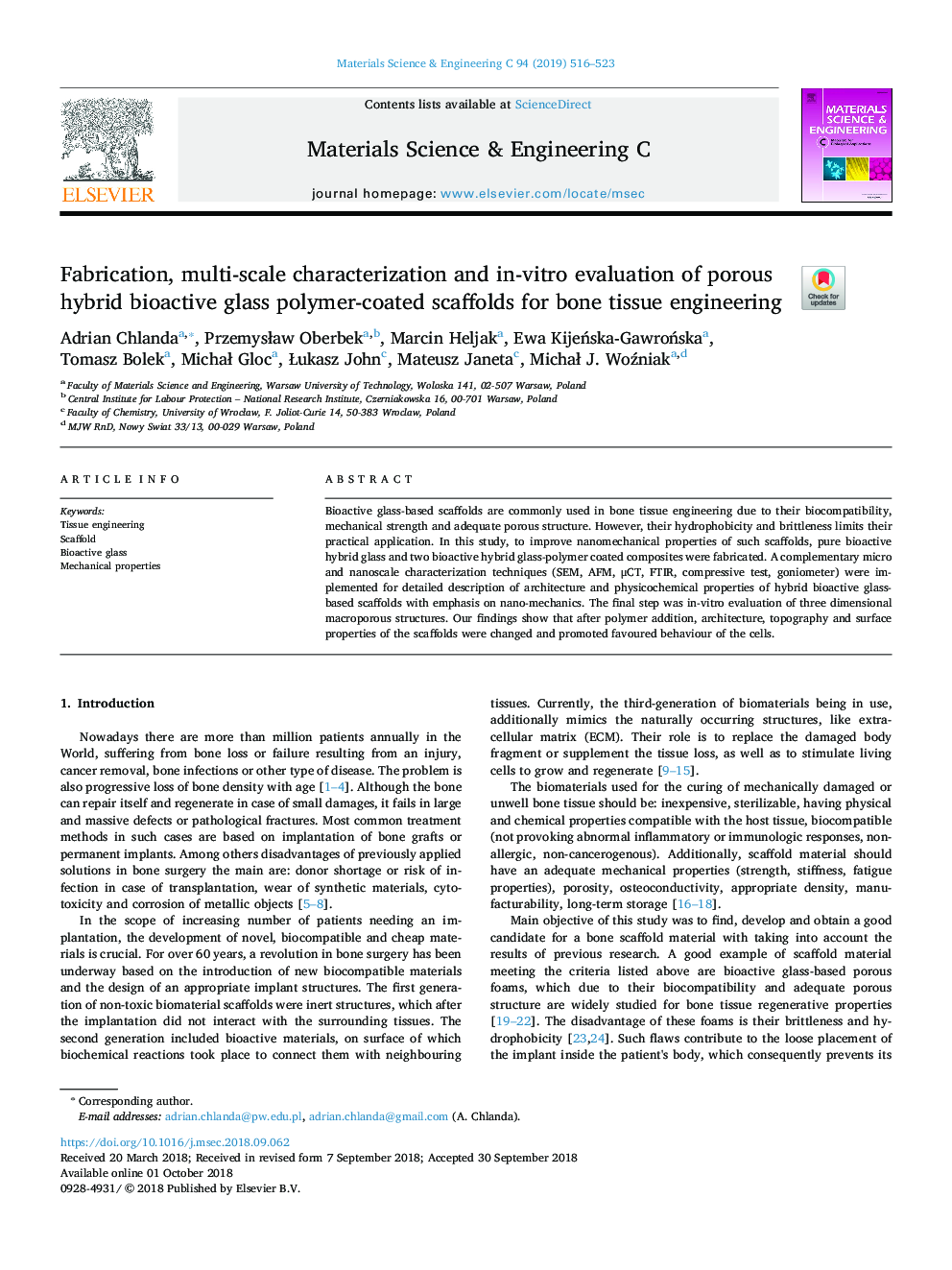| Article ID | Journal | Published Year | Pages | File Type |
|---|---|---|---|---|
| 11026839 | Materials Science and Engineering: C | 2019 | 8 Pages |
Abstract
Bioactive glass-based scaffolds are commonly used in bone tissue engineering due to their biocompatibility, mechanical strength and adequate porous structure. However, their hydrophobicity and brittleness limits their practical application. In this study, to improve nanomechanical properties of such scaffolds, pure bioactive hybrid glass and two bioactive hybrid glass-polymer coated composites were fabricated. A complementary micro and nanoscale characterization techniques (SEM, AFM, μCT, FTIR, compressive test, goniometer) were implemented for detailed description of architecture and physicochemical properties of hybrid bioactive glass-based scaffolds with emphasis on nano-mechanics. The final step was in-vitro evaluation of three dimensional macroporous structures. Our findings show that after polymer addition, architecture, topography and surface properties of the scaffolds were changed and promoted favoured behaviour of the cells.
Related Topics
Physical Sciences and Engineering
Materials Science
Biomaterials
Authors
Adrian Chlanda, PrzemysÅaw Oberbek, Marcin Heljak, Ewa KijeÅska-GawroÅska, Tomasz Bolek, MichaÅ Gloc, Åukasz John, Mateusz Janeta, MichaÅ J. Woźniak,
